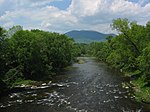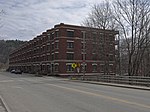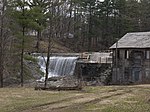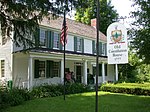Balloch, New Hampshire
Cornish, New HampshireNew Hampshire populated places on the Connecticut RiverUnincorporated communities in New HampshireUnincorporated communities in Sullivan County, New HampshireUse mdy dates from July 2023

Balloch is an unincorporated community in the southwest corner of the town of Cornish, New Hampshire, in the United States. The name is derived from the Balloch Farm, originally owned by James Balloch (1761-1840) and, later, by his son William Balloch (1820-1893). It was the site of a small Boston & Maine Railroad station, built in the 1890s and destroyed in a freight train derailment on February 12, 1928.
Excerpt from the Wikipedia article Balloch, New Hampshire (License: CC BY-SA 3.0, Authors, Images).Balloch, New Hampshire
Chase Road,
Geographical coordinates (GPS) Address Website Nearby Places Show on map
Geographical coordinates (GPS)
| Latitude | Longitude |
|---|---|
| N 43.432222222222 ° | E -72.3925 ° |
Address
North Star Canoe
Chase Road
03745
New Hampshire, United States
Open on Google Maps











